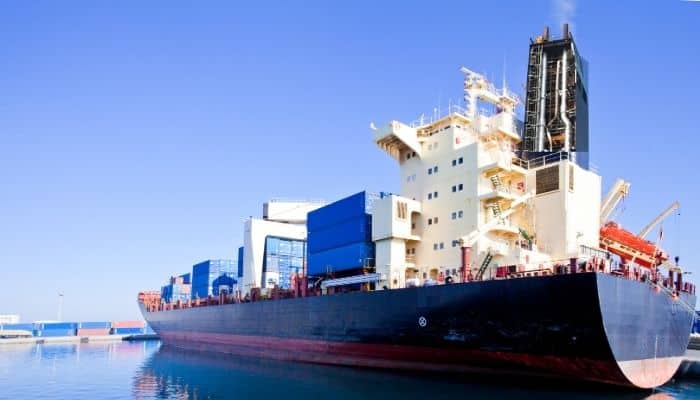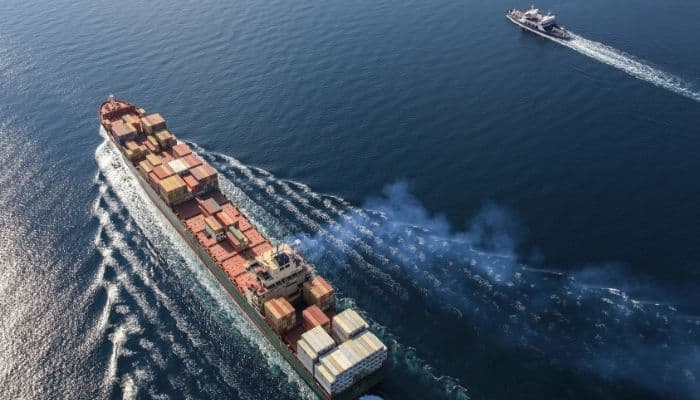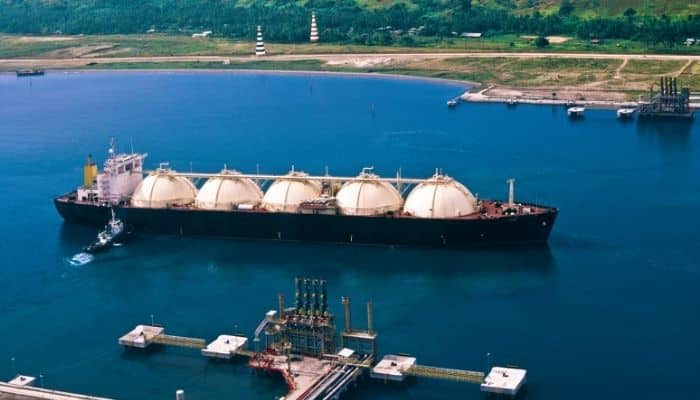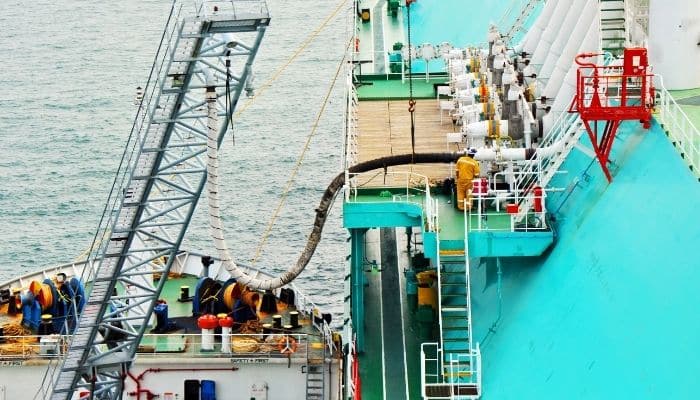Types Of Bunker/ Scrubbers Carriers Can Use To Ensure Compliance With International Emission Control Regulations
Maritime transport is the most widely used mode for international transport of goods, with an estimated 80% of world trade being carried via vessels. Besides being cost-effective, shipping is also one of the most eco-friendly modes of transport.
Despite this, emissions emanating from the carriage of goods by ships have been the subject of intense scrutiny in recent years, with various countries, economic groupings, international bodies, and trade associations introducing rules and regulations to minimise emissions gradually, with the ultimate intent of making the shipping industry carbon neutral by 2050.
This heightened focus is because even though the maritime sector is less polluting/ more eco-friendly in the relative sense, the sheer amount of cargo it carries means that it accounts for 3.1% of global CO2 emissions per annum (making the industry, taken as a cumulative whole, a bigger polluter than Germany, which is the 6th bigger emitter globally.
These regulations also include initiatives by individual countries (such as the USA) or trading blocs (such as the European Union).
The more impactful of these legislations/ regulations are:
- IMO directives mandating reducing the permissible sulphur content in bunker fuel from 3.5% to 0.5% (came into effect in 2020).
- IMO 2023 regulations have made it mandatory for all vessels to measure energy efficiency by calculating their Energy Efficiency Existing Ship Index (EEXI)
- Reporting of their annual operational Carbon Intensity Indicator (CII) and CII rating
- EU Emission Trading System (ETS) – implemented by the European Union, the ETS aims to reduce emissions by setting a cap on the permissible limit of emissions for companies. Companies exceeding the specified limits are compelled to purchase additional credits, while entities with a surplus left over from their specified limit can sell their remaining credits.
In this article, we will explore the options available to container carriers and other shipping companies to ensure adherence to these regulations.
Carriers have four broad ways to comply with emission control laws. These include installing scrubbers, using LSFO (Low Sulphur Fuel) bunker, LNG, or using bio-fuels (alternate fuels).
Scrubbers
Technically known as Exhaust Gas Cleaning Systems, scrubbers remove polluting effluents from bunker fuel, which results in lower emissions.
Installing scrubbers allows companies to continue using the existing grade of bunker fuel, as the scrubber will reduce the volume of pollutants.

The advantages for carriers are that there is no significant increase in their bunker spend, as they can continue procuring the existing grade at lower prices (vis a vis LSFO).
The net benefit of using scrubbers depends on the price differential between standard bunker fuel and Low Sulphur Fuel (LSFO). While LSFO is generally more expensive, the price spread varies and sometimes can be significant. Generally speaking, the more expensive LSFO is, the more attractive an investment in scrubbers will be.
On the flip side, installing scrubbers involves laying up the ship for a few weeks or months (depending on the existing orders and backlog at the selected shipyard). During this time, the vessel will be inoperational and not earn revenue.
Besides, the scrubber installation will result in the loss of some slots, as the scrubber will take up some space on the vessel, which will reduce the vessel’s nominal capacity. Generally speaking, this isn’t a major cause for concern, as the average vessel size keeps increasing, and bigger vessels are ordered. Due to the incremental tonnage infused in the market, there is, at most times, considerable capacity available on most routes, so the container carrier will unlikely lose revenue from the lost slots (unless markets are exceptionally buoyant and vessel utilisation rates very high).
During the freight rate bull run in 2021 and 2022, propelled by supply chain disruptions and congestion at ports globally, given that freight rates were often ten times the historical average, Carriers preferred to maximise revenues by increasing vessel operational time as much as was reasonably possible. All available tonnage was deployed to cater to higher demand on most head haul routes in a bid to optimise revenue. Where layups for maintenance were optional, it was deferred as much as the Carrier could.
Another factor that needs to be considered while evaluating the decision on installing scrubbers or utilising compliant fuels is limitations on port calls. Scrubbers are of 2 types, i.e. closed loop or open loop. Certain ports have imposed restrictions that prevent vessels with open-loop scrubbers from calling at the port. This effectively reduces the vessel owners’ options for deploying the vessel on certain routes/ trades.
The vessel’s age is another determinant in this decision, as the investment required to install scrubbers needs to be recovered over the remaining life of the vessel. Should the vessel be relatively old, the carrier will not have enough time left to recover the cost of the scrubber installation, in which case the investment will not deliver the intended returns. Scrubbers are more viable in the case of newer vessels, as the carrier has a longer time frame to recover its investment.
Low Sulphur Fuel (LSFO)
LSFO refers to fuel subject to additional refining to reduce the proportion of sulphur content to the permissible limit. Carriers using LSFO are, therefore, by default compliant with the 0.5% sulphur fuel content, without the need for changing the vessel’s design or structure or installing scrubbers.
This is the most straightforward method of ensuring compliance but comes at a price, as LSFO commands are considerably more expensive than a traditional bunker. The premium that LSFPO commands depend on a host of factors, such as the availability of LSFO, carrier preference for LSFO (as opposed to scrubbers or alternate fuels), and the cost of installing scrubbers.

The benefits of LSFO include the fact that the vessel can continue operations without the need for layups or downtime for installation of scrubbers, thereby negating the need for expensive alterations to the vessel’s structure or design, no loss of slots or reduction in the vessels nominal carrying capacity.
Disadvantages include the higher price of LSFO, which can cause Carriers’ bunker spending to shoot steeply, resulting in a corresponding spike in operating costs and a negative impact on the vessel operators’ cash flows.
Another challenge is the availability of LSFO. Being a relatively new fuel type, there has not been as much investment in refining capacity and ensuring availability of adequate quantities of LSFO as would be necessitated by a sudden increase in demand; therefore, post the implementation of the sulphur cap rules/ other regulations.
Using LSFO also provides operational flexibility in terms of vessel deployment, as it ipso facto eliminates the factor of restrictions on open-loop scrubbers at certain ports.
Liquefied Natural Gas (LNG)
LNG is yet another option available to shippers, which has been in vogue for a while now. According to experts, LNG removes sulphur in the pre-liquefaction process, emitting minimal sulphur oxide, particulate matter or nitrogen oxide, and hence is very eco-friendly.
The disadvantages of using LNG are all primarily related to costs, as it involves the installation of engines that can use LNG as fuel. Additionally, investment is also required in equipment other than engines. This includes fuel tanks, which are 2 to 3 times larger than conventional ones.

Construction costs are estimated to be 15-30% higher for new builds designed to run on LNG than conventionally fuelled vessels.
The prevalence of LNG fuelled vessels is determined by the HSSE and Bunker management strategies adopted by individual carriers. While some carriers such as CMA-CGM have invested in LNG-powered ships, and Hapag-Lloyd has made initial forays in that direction, carriers such as Maersk have categorically stated in public that LNG would not play a major role for them as a transition fuel.
An interesting development in this regard is the emergence of dual-fuel capable vessels, which can use either LNG or a bio-fuel, increasing their operational flexibility and allowing Carriers to hedge their bets against non-availability / shortages and future prices of the 2 (or more fuel) types.
Bio-Fuels / Alternate fuels
Biofuels such as methanol, ammonia, methane etc., are produced by converting biomass or biomass residues into marine fuel and are bio-degradable and non-toxic.
Due to this, biofuels are increasingly being viewed as a feasible alternative for the future, and companies are exploring using biofuels for vessel operations. Touted as futuristic fuels, extensive research and development are underway, with trial runs on selected ports and routes.

Most major container carriers have partnered with select ports and/ or green technology companies to test these fuels and evaluate their operational efficacy and commercial viability.
Examples include CMA CGM partnering with MPA, Singapore, to commence bio-fuel bunkering in Singapore as part of a trial project. The 6-month global trial involved up to 32 container ships running on different biofuel blends to gauge the relative efficiency of various biofuel options.
PIL also conducted similar experiments using marine biofuels on their container vessel Kota Megah, in early 2022.
Other Carriers that have tested or are currently testing biofuels are Maersk Line, ONE, and HMM.
In the next article, we will explore in detail the cost implications, advantages and disadvantages of various options and the factors that Carriers consider while evaluating which option to select.
You Might Also Like To Read-
- How Ships Fight Corrosion At Sea?
- What Is Mooring Of Ships?
- Safety Features on LNG Powered Ships
- What is An Emergency Position Indicating Radio Beacon (EPIRB)?
- Stowaways On Ships – Classification And Measures To Prevent
Disclaimer: The authors’ views expressed in this article do not necessarily reflect the views of Marine Insight. Data and charts, if used, in the article have been sourced from available information and have not been authenticated by any statutory authority. The author and Marine Insight do not claim it to be accurate nor accept any responsibility for the same. The views constitute only the opinions and do not constitute any guidelines or recommendations on any course of action to be followed by the reader.
The article or images cannot be reproduced, copied, shared, or used in any form without the permission of the author and Marine Insight.
Do you have info to share with us ? Suggest a correction

About Author
Jitendra has over 20 years of international experience in the Container Shipping, Ports and Logistics industry, spanning 3 diverse geographies, wherein he has been involved in the commercial and strategic aspects of the container business.
Subscribe To Our Newsletters
By subscribing, you agree to our Privacy Policy and may receive occasional deal communications; you can unsubscribe anytime.



